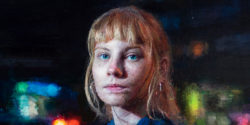“Architecture
Sculpture
Painting
Music
Poetry
Dance
Performing
Vandalism”
At first glance, these forms diverge, yet the broader realm of the arts and culture cannot deny that street art often involves vandalism. How do we reconcile this, or is the point too obvious? Some argue that vandalism discredits artistic value, with the act of breaking laws undermining the legitimacy of the message. Others see vandalism as an essential method, embedding its impact in its defiance. By choosing to act outside the law, the artist magnifies the work’s power and compels attention. Still, others view the act as a provocative, high-risk form of public dialogue, forcing questions about authority, access, and the right to occupy space—or even have a voice.

Recognizing vandalism as the illegal destruction of property is important. So is examining its context. In marginalized neighborhoods—left as open pits of decay by systems of power—street art often reclaims spaces long ignored. This challenges a public policy focus that targets graffiti artists while overlooking the larger forces of urban decay. If we have the energy and resources to pursue the teenage vandal with a spray can, shouldn’t we also jail the person who dumped chemicals into the water supply beneath the lot?
Elfo’s unauthorized wall message provokes a deeper question: if resources exist to penalize street artists, shouldn’t the same effort address the corporate or systemic neglect that leaves these walls abandoned? Elfo’s list, like much street art, demands a response—it’s his style. It forces a reassessment of how we value public spaces and who gets to define their use. Can we dismiss the artist’s work only as destruction when it activates forgotten spaces and sparks critical debate? Or does illegality override the art’s intent? Street art isn’t just visual; it’s often a direct confrontation with the systems that govern public life and urban spaces.

 BROOKLYN STREET ART LOVES YOU MORE EVERY DAY
BROOKLYN STREET ART LOVES YOU MORE EVERY DAY

































